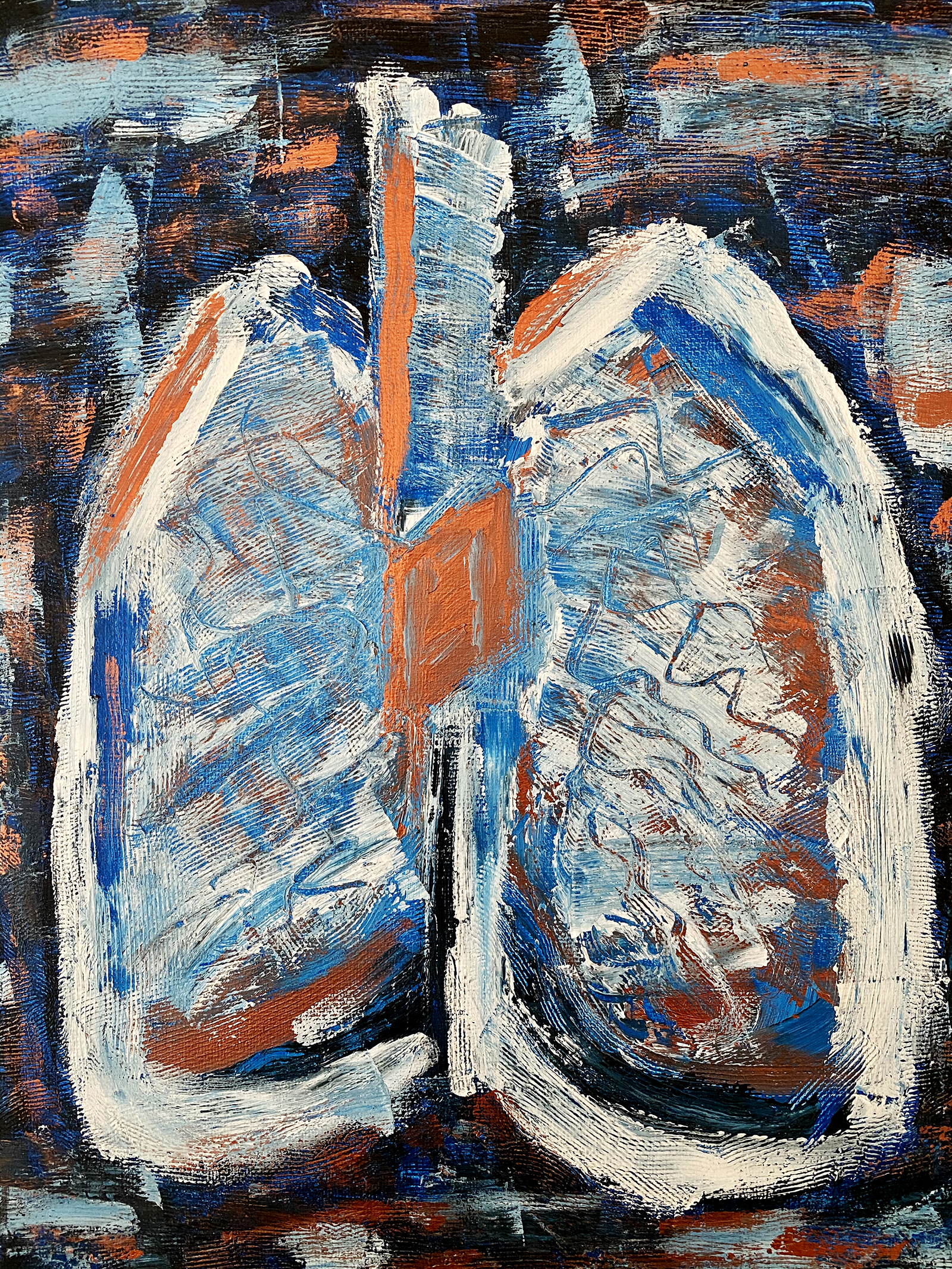We’ve come a long way in preventative health. A quick Internet search will return an abundance of literature promoting mental, gut, skin, physical and fitness health, but with the insurgency of COVID-19, shouldn’t we be taking preventative lung health measures too?
The lungs’ main role is a process called respiration, or breathing, which involves exchanging oxygen from the air we breathe with a waste product called carbon dioxide. Air exchange takes place in the pulmonary capillaries housed inside the alveoli, which are the tiniest functional units of the respiratory system, located in the lungs. Incoming oxygen gets circulated throughout the bloodstream to be used by our body and organs. Conversely, carbon dioxide waste leaves the blood by way of the lungs. In addition to respiration, the lungs also act as filters. Mucous in the lungs collect and hold germs, dust and other foreign material. It is then expelled in the form of coughing, sneezing and clearing your throat.
As lungs age, they become less flexible and lose elasticity, resulting in making breathing more difficult. But by exercising your lungs and maintaining a healthy lifestyle you can prolong the vitality of your lungs and preserve lung performance even in your senior years. Dr. Luis Javier Peña-Hernández, a lung health specialist at PCSI, an integrated pulmonary and chest specialty group in Palm Beach County, Florida, says there are ways we can exercise and improve our lung health and prevent lung disease, especially during the COVID-19 crisis.
Clean your Cloth Masks
Homemade masks made for multiple uses need to be cleaned after each use to prevent bacteria from harboring in the material. You should own more than one so a mask is available to you at all times. According to the CDC, masks can be cleaned with your laundry in your warmest appropriate setting. Masks can also be washed by hand by mixing 4 teaspoons of household bleach per quart of room temperature water and soaking for 5 minutes. Do not mix household bleach with ammonia or any other cleanser.
Exercise
Exercise doesn’t just keep your body in shape; it keeps your lungs in shape also. Exercise increases the cardiac demand, making your heart beat faster and your lungs work harder. Healthy lungs rise to the challenge to deliver increased amounts of oxygen and expel the additional carbon dioxide in shorter faster periods of time. Over time, with consistent exercise, the lungs become conditioned to meet the requirements needed while exercising. The rewards are reaped even while resting through improved lung capacity, which is the amount of oxygen you take in with each breath.
Sing in the Shower
While karaoke may not be available to you during the pandemic, singing in a hot shower provides two benefits to lung health. Steam caused by hot showers can help to naturally loosen mucus for expulsion. Mucus is produced in your throat and lungs and helps trap particles such as dust, viruses and bacteria. Combined with singing, it can help by naturally clearing your lungs. Singing is a type of exercise that engages core muscles and challenges the diaphragm to fill your lungs deeper.
Stop Smoking
Focus on the positive benefits of smoking cessation: Success is obtainable, and the advantages of quitting might be noticeable sooner than you may think. Within just 20 minutes of your last cigarette, pulse and blood pressure begin to return to normal. Blood flow and lung performance begin to improve in as little as two weeks. “Finding a support system when quitting is important as well,” Pena says. He suggests a multidisciplinary approach that includes patient-family education, smoking cessation counseling, prescribed smoking cessation aids when indicated and follow-up ongoing monitoring. “We feel multiple avenues of support have better outcomes than unilateral modalities.”
Reduce Exposure to Pollutants
The lungs reduce the ability to resist infections and disease as you age. Reducing exposure to indoor and outdoor pollutants help take some burden off the lungs.
-
Make your home a smoke-free zone and avoid second-hand smoke.
-
Avoid exercising near heavy traffic areas or peak traffic times.
-
Be sure to change your AC filter regularly.
-
Keep your home clean. Vacuum and dust weekly. Pet dander, dust and mold are common lung irritants.
-
Use natural cleaning products when possible and ventilate your home by opening a window when using products that create fumes.
-
Avoid artificially scented home fresheners and candles that contain irritants such as formaldehyde and benzene. Aromatherapy diffusers, homemade candles and essential oils are a safer alternative to naturally scent the air.
Practice Breathing
Two popular beneficial lung exercises include pursed lip breathing and diaphragmatic breathing. Although these may seem easy, practice may be needed to work up to doing these two times a day for 5-10 minutes a day. When practiced regularly, breathing exercises can help mobilize stale air, increase oxygen levels and strengthen the elasticity of the diaphragm.
-
Pursed lip breathing. Begin by sitting with your back straight or laying down. Relax your shoulders. Inhale through your nose, feeling the air move in, causing your abdomen to fill. Purse your lips as if you’re whistling and slowly breath out. Make sure to exhale twice as long as it takes to breathe in. Repeat.
-
Diaphragmatic breathing. Lie on your back or a flat surface, bend your knees and support your head with a pillow. Place one hand on your upper chest and the other just below your rib cage so you can feel your diaphragm move as you breathe. While keeping your hand still on your chest, breathe in slowly through your nose, feeling your stomach move out against your hand, and exhale through pursed lips. Keep the hand on your upper chest as still as possible. As this exercise gets easier, you can try the diaphragmatic breathing technique while sitting in a chair.
Most people will benefit from implementing these tips.
Even people living with lung disease can reduce the impact by making adjustments. “Anyone with a history of lung disease planning on beginning a new exercise regimen, or for new or worsening shortness of breath, should consult with their physician first,” Pena says.



